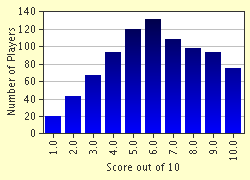Quiz Answer Key and Fun Facts
1. Well, into the lab bright and early at 9am. First on the agenda today is getting on that reaction I looked up yesterday afternoon. The first piece of glassware I take out of my glassware drawer is one designed to conveniently hold reagents while they are in the process of reacting. This piece of glassware is a ________.
2. I want to heat this reaction to reflux (boiling). What is the piece of glassware that I will need to use to make sure all the solvent vapour doesn't escape?
3. OK, so I'm not going to lose any solvent now. But I do want to make sure that no water gets into my reaction - I've got some moisture-sensitive reagents in there. What piece of glassware might I use to prevent water entering the reaction set-up?
4. Right, the reaction is bubbling away happily now, and things are looking good. However, my reaction isn't changing colour or doing anything else to indicate that it might be doing what it's supposed to be doing. What analytical technique is the one I might be most likely to use to check the progress of my reaction without having to stop the reaction?
5. Good news - the reaction is proceeding just as it should! In fact, it looks like it's pretty much done, so now it's time to stop the reaction and do the work-up. The procedure I found in the library says that I need to add dichloromethane to the reaction mixture, extract this mixture with 5% sodium hydroxide and then wash it with water. What piece of glassware should I use to carry out this process?
6. So now I've got this solution (which I'm hoping has my reaction product in it!), but I don't want all this solvent it's sitting in. Which piece of laboratory equipment should I use to remove the solvent safely, quickly and easily?
7. All right, I've isolated my crude reaction product and I'm really hoping it's the right thing. I was hoping to make an ester in this reaction. What instrument might I use now to give me information on what functional group(s) the reaction product contains?
8. Things are looking good now - my crude sample seems to have the compound I want in it. Unfortunately, it looks a bit brown and grungy, so I need to purify it. It's a solid, so I think I'll recrystallise it. In what should I carry out the recrystallisation?
9. I've come back after having some lunch to find I've got lots of lovely-looking crystals in my recrystallisation vessel just waiting to be collected. Which of the following is the most appropriate set of glassware to use to collect my nice, shiny crystals?
10. I've transferred my beautiful crystals into a labelled sample vial and, besides checking their melting point, I'm going to use one more instrument in the chemistry building to help me make sure that I've made the right compound. I take a small sample of my crystals and drop it into a long, thin glass tube, add some special solvent and put a lid on, shaking the mixture until everything dissolves. Then I head downstairs to an instrument that will give me a carbon-hydrogen "map" of the molecule. What instrument am I heading for?
Source: Author
NatalieW
This quiz was reviewed by FunTrivia editor
crisw before going online.
Any errors found in FunTrivia content are routinely corrected through our feedback system.

